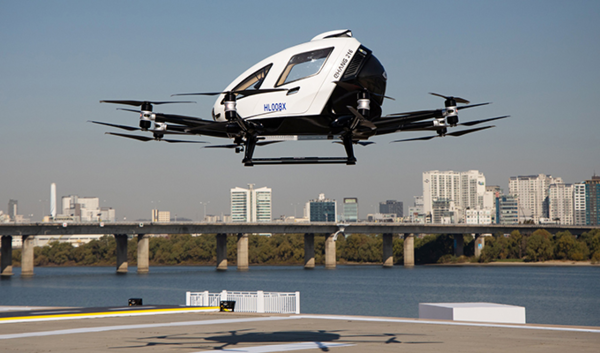Input 2021.02.19 17:09 | Revision 2021.02.19 18:54
Lee Hang’s stock price fell 62.69% on the day of the report, and the next day rebounded 67.88% when Lee Hang issued a refutation containing an interview with Chairman Hwaji-hoo. On the 18th, the stock price fell by 21.28% again. The current stock price is $61.19, down to half of the 12th ($124.09) before the report was released.
Just before the report came out, Lee Hang was the 10th largest stock held by Koreans. It was followed by leading conglomerates such as Tesla, Apple, Amazon, and Nvidia. What was the report that shook Lee Hang’s stock price? The main issues are summarized into three.

According to Wolfpack Research, Leehang’s main supplier is’Shanghai Kunxiang Intelligent Technology Co., Ltd.’ Wolfpack Research claims Kunxiang is a company impatient to make Li Hang’s fake sales.
According to documents compiled by Wolfpack Research, Kunxiang was established 9 days before signing a large-scale delivery contract with Lee Hang. Lee Hang and Kunxiang signed a first contract worth 450 million yuan (about 77.7 billion won) in February 2019, and a second contract worth 30 million yuan (about 5.1 billion won) four months later.
In the report, Wolfpack Research explained, “Kunshang’s capital is only 10 million yuan (about 1.7 billion won),” and “the capital is insufficient to fulfill the sales contract.”
Even more suspicious is that the price per product was adjusted through two contracts. Kunxiang purchased three aircraft for 450 million yuan in the first contract and 20 aircraft for 30 million yuan in the second contract. In the beginning, the price per unit was 150 million yuan (about 25.7 billion won), but after that, it was adjusted to 1.5 million yuan (about 200 million won). The product price has been reduced to a hundredth.


Wolfpack Research insisted, “Isn’t it that investors and competitors saw that the down payment was absurd and that trust in binomial could be undermined?”
Wolfpack Research pointed out that the reality of Kunxiang is also unclear. A Wolfpack Research investigator personally visited three of Kunxiang’s offices in China, claiming that two did not exist. One is a hotel that has nothing to do with Kunshang, and the other is an 11-story building that Kunshang has not occupied. Kunxiang’s website says that this office is on the 13th floor.

In addition, the employee told the investigator that “Kunshang invested 100 million yuan (about 11.7 billion won) before listing in Lihang.” Wolfpack Research suspected that Kunxiang had signed a false contract to earn money by investing in Lee Hang. As of the 12th, Kunxiang’s investment has risen to 4772.7 million yuan (about 80.9 billion won).
In a press release, Lee Hang rebutted, “Kunshang has never been a shareholder before Lihang’s listing, and as far as we know, it hasn’t even been after listing.” “It is not very different from the conditions, and all contracts are subject to an arm-length transaction.”
② Factory with only one sheriff… Lack of manufacturing equipment
Wolfpack Research insisted that the factory in Guangzhou, China, which it visited, had insufficient facilities. First of all, the investigator explained that there was only one sheriff at the front door, so the investigator entered the factory through the rear door without difficulty. “It’s unimaginable that there are few sheriffs in the production and storage of products full of intellectual property (IP) and proprietary technologies that go into world-class AAVs,” Wolfpack Research points out.
Wolfpack Research said there was no assembly line inside the building. It is explained that although several AAV aircraft were erected, there were no production facilities or stock of materials. Instead, there was a pile of boxes on the third floor. Wolfpack Research raised a suspicion, “Isn’t it simple to assemble an almost finished product?”

An official from Lee Hang said in a refutation, “The Guangzhou plant in Li Hang is equipped with AAV production facilities with a total area of 8750 square meters.” “We are constructing a new factory in Yunfu capable of producing 600 AAVs for passengers annually.” .
Following this, Lee Hang said, “We caught a man pretending to be a delivery person trespassing into one of our facilities with a closed circuit television (CCTV),” and said, “They were photographed maliciously.” Lee Hang’s position is that when the pandemic is over, it will invite stakeholders to their Chinese business sites.

Wolfpack Research insisted that Lee Hang is receiving products from China’s hobby motor manufacturer’T Motor’ in a customized form.
According to a former NASA employee interviewed by Wolfpack Research, T-motor products are difficult to use in aircraft that carry humans. Wolfpack Research pointed out that Lee Hang’s technical skills were inadequate, saying that there is a similar type of model to Lee Hang’s’EH216′ in the product introduction section of the T motor homepage.

